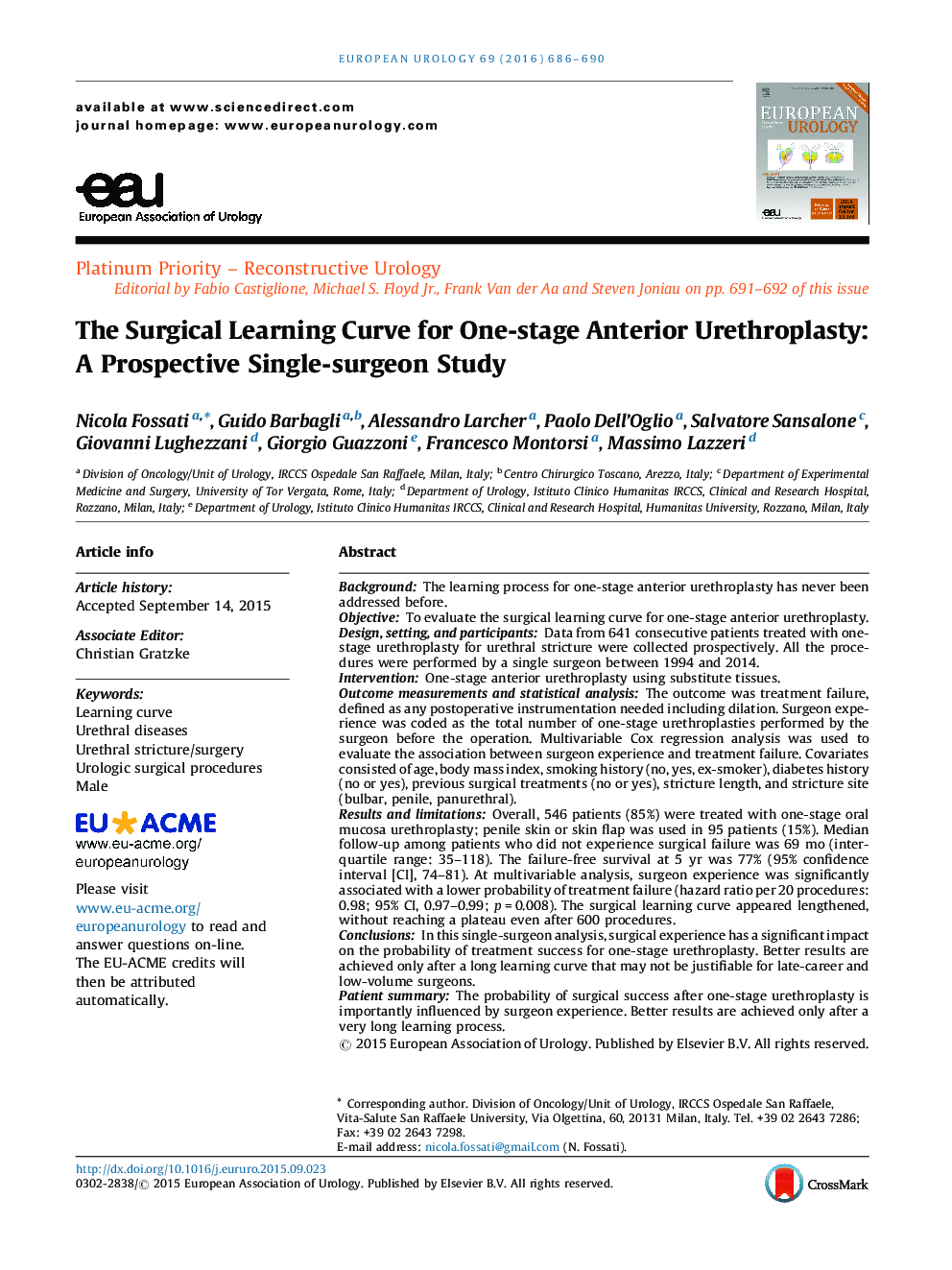| کد مقاله | کد نشریه | سال انتشار | مقاله انگلیسی | نسخه تمام متن |
|---|---|---|---|---|
| 6177537 | 1253103 | 2016 | 5 صفحه PDF | دانلود رایگان |
BackgroundThe learning process for one-stage anterior urethroplasty has never been addressed before.ObjectiveTo evaluate the surgical learning curve for one-stage anterior urethroplasty.Design, setting, and participantsData from 641 consecutive patients treated with one-stage urethroplasty for urethral stricture were collected prospectively. All the procedures were performed by a single surgeon between 1994 and 2014.InterventionOne-stage anterior urethroplasty using substitute tissues.Outcome measurements and statistical analysisThe outcome was treatment failure, defined as any postoperative instrumentation needed including dilation. Surgeon experience was coded as the total number of one-stage urethroplasties performed by the surgeon before the operation. Multivariable Cox regression analysis was used to evaluate the association between surgeon experience and treatment failure. Covariates consisted of age, body mass index, smoking history (no, yes, ex-smoker), diabetes history (no or yes), previous surgical treatments (no or yes), stricture length, and stricture site (bulbar, penile, panurethral).Results and limitationsOverall, 546 patients (85%) were treated with one-stage oral mucosa urethroplasty; penile skin or skin flap was used in 95 patients (15%). Median follow-up among patients who did not experience surgical failure was 69 mo (interquartile range: 35-118). The failure-free survival at 5 yr was 77% (95% confidence interval [CI], 74-81). At multivariable analysis, surgeon experience was significantly associated with a lower probability of treatment failure (hazard ratio per 20 procedures: 0.98; 95% CI, 0.97-0.99; p = 0.008). The surgical learning curve appeared lengthened, without reaching a plateau even after 600 procedures.ConclusionsIn this single-surgeon analysis, surgical experience has a significant impact on the probability of treatment success for one-stage urethroplasty. Better results are achieved only after a long learning curve that may not be justifiable for late-career and low-volume surgeons.Patient summaryThe probability of surgical success after one-stage urethroplasty is importantly influenced by surgeon experience. Better results are achieved only after a very long learning process.
Journal: European Urology - Volume 69, Issue 4, April 2016, Pages 686-690
